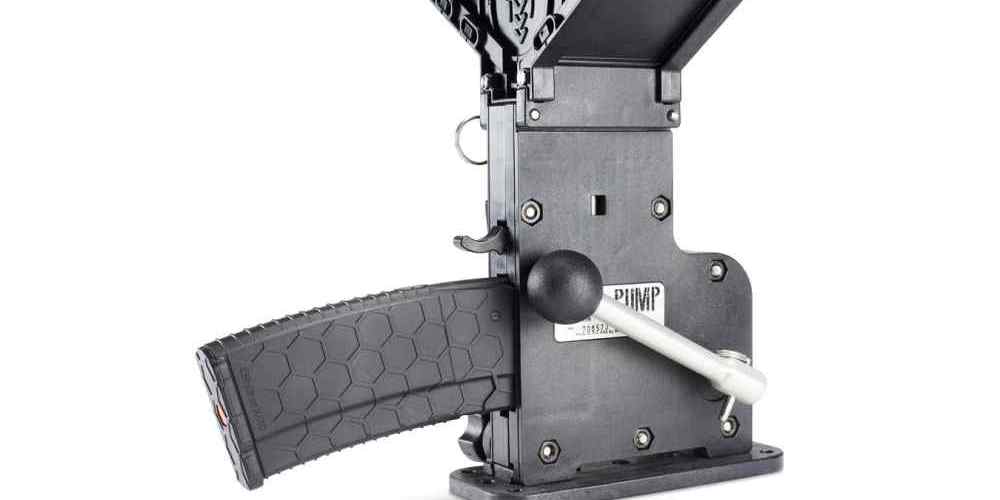“Stay ready, stay safe: Practice makes perfect with your AR15 magazines.”
Importance of Regular Maintenance for AR15 Magazines
Regular maintenance of your AR15 magazines is crucial to ensure the reliable functioning of your firearm. One important aspect of this maintenance is conducting drills to prepare for potential malfunctions that may occur during use. By practicing these drills regularly, you can familiarize yourself with the proper procedures for addressing issues with your magazines and improve your overall shooting experience. One common malfunction that can occur with AR15 magazines is a failure to feed. This can happen for a variety of reasons, such as a dirty or damaged magazine, improper ammunition, or a problem with the firearm itself. To prepare for this type of malfunction, it is important to practice clearing the magazine and reloading it quickly and efficiently. Start by ensuring that your firearm is unloaded and safe to handle. Then, simulate a failure to feed by intentionally causing a round to get stuck in the magazine. Practice removing the magazine from the firearm, inspecting it for any obstructions or damage, and clearing the issue. Once the magazine is clear, reload it into the firearm and continue shooting. Another common issue that can arise with ar15 magazines is a double feed, where two rounds try to enter the chamber at the same time. This can cause a jam and prevent the firearm from firing properly. To prepare for this type of malfunction, practice clearing the double feed quickly and effectively. Begin by recognizing the double feed and immediately stop firing. Remove the magazine from the firearm and clear any obstructions or jams. Once the issue is resolved, reload the magazine and continue shooting. By practicing this drill regularly, you can improve your reaction time and ensure that you are prepared to handle a double feed in a real-life situation. In addition to practicing drills for specific malfunctions, it is also important to regularly inspect and clean your AR15 magazines to prevent issues from occurring in the first place. Make sure to check for any signs of wear or damage, such as cracks, dents, or rust. Clean the magazines thoroughly with a brush and solvent to remove any dirt, debris, or residue that may affect their performance. It is also a good idea to rotate your magazines regularly to prevent them from becoming worn out or unreliable. By using multiple magazines and switching them out periodically, you can ensure that each one gets equal use and remains in good working condition. In conclusion, regular maintenance of your AR15 magazines is essential for ensuring the reliable functioning of your firearm. By practicing drills to prepare for potential malfunctions and regularly inspecting and cleaning your magazines, you can improve your shooting experience and be better prepared to handle any issues that may arise. Remember to always prioritize safety and follow proper procedures when handling firearms.
How to Properly Clean and Lubricate AR15 Magazines
When it comes to owning and operating an AR15, proper maintenance is key to ensuring its longevity and performance. One often overlooked aspect of maintenance is the care and maintenance of your AR15 magazines. These essential components play a crucial role in the function of your rifle, so it’s important to know how to properly clean and lubricate them to prevent malfunctions and ensure smooth operation. To begin, it’s important to understand the basic components of an AR15 magazine. The magazine consists of a body, follower, spring, and base plate. These components work together to feed ammunition into the rifle’s chamber, so it’s crucial that they are kept clean and well-maintained. One of the most common issues that can arise with AR15 magazines is dirt and debris buildup. Over time, dirt and debris can accumulate inside the magazine, causing feeding issues and malfunctions. To prevent this, it’s important to regularly clean your magazines using a few simple steps. Start by disassembling the magazine. Remove the base plate and spring, then carefully remove the follower from the body. Inspect each component for dirt, debris, or signs of wear. Use a clean cloth or brush to remove any buildup, being careful not to damage the components. Next, clean the inside of the magazine body using a solvent or cleaning solution. Be sure to thoroughly clean the feed lips and follower channel, as these areas are prone to buildup. Once the inside of the magazine is clean, wipe down the components with a clean cloth to remove any excess solvent. After cleaning, it’s important to lubricate the magazine to ensure smooth operation. Apply a small amount of gun oil or lubricant to the spring, follower, and inside of the magazine body. Be sure to use a lubricant that is specifically designed for firearms, as using the wrong type of lubricant can cause damage to the components. Once the magazine is clean and lubricated, reassemble it and perform a function check to ensure everything is working properly. Insert the magazine into your rifle and cycle the action to ensure smooth feeding. If you encounter any issues, disassemble the magazine and inspect the components for any signs of wear or damage. In addition to regular cleaning and lubrication, it’s also important to perform regular maintenance drills with your AR15 magazines. This involves practicing loading and unloading the magazines to ensure they are functioning properly. By regularly practicing with your magazines, you can identify any issues before they become a problem in a real-world scenario. In conclusion, proper care and maintenance of your AR15 magazines are essential to ensuring the reliable operation of your rifle. By regularly cleaning, lubricating, and practicing with your magazines, you can prevent malfunctions and ensure smooth feeding. Remember to always use the proper tools and techniques when cleaning and lubricating your magazines, and never use excessive force when disassembling or reassembling them. With proper care and maintenance, your AR15 magazines will continue to perform reliably for years to come.
Conducting Function Checks on AR15 Magazines
When it comes to owning and operating an AR15 rifle, it is crucial to be prepared for any potential malfunctions that may occur. One of the most common issues that can arise with an AR15 is magazine-related problems. To ensure that your rifle is always functioning properly, it is important to conduct regular drills with your AR15 magazines. One of the first steps in preparing for malfunctions is to familiarize yourself with the different types of AR15 magazines available on the market. There are various manufacturers and styles of magazines, each with their own unique features and functions. By understanding the differences between these magazines, you can better troubleshoot any issues that may arise during use. Once you have a good understanding of the different types of AR15 magazines, it is time to start conducting function checks on your magazines. This involves inspecting each magazine for any visible damage or defects, such as cracks, dents, or bulges. It is also important to check the feed lips and follower for any signs of wear or deformation. After visually inspecting your magazines, it is time to conduct a physical function check. This involves loading the magazine with dummy rounds and cycling them through your rifle to ensure that the magazine feeds properly. Pay close attention to how the rounds feed into the chamber and whether there are any jams or misfeeds. In addition to physical function checks, it is also important to conduct regular maintenance on your AR15 magazines. This includes cleaning and lubricating the magazines to ensure smooth operation. It is recommended to clean your magazines after every use, especially if they have been exposed to dirt, debris, or moisture. Another important aspect of preparing for malfunctions is to practice reloading drills with your AR15 magazines. This involves practicing both tactical reloads, where you replace a partially empty magazine with a full one, and emergency reloads, where you replace an empty magazine with a full one. By practicing these drills regularly, you can improve your speed and efficiency in reloading your rifle during a malfunction. It is also important to keep a supply of spare magazines on hand in case of malfunctions. Having extra magazines readily available can help you quickly address any issues that may arise during a shooting session. It is recommended to carry at least two to three spare magazines with you whenever you are using your AR15 rifle. In conclusion, preparing for malfunctions with your AR15 magazines is an essential part of owning and operating an AR15 rifle. By familiarizing yourself with the different types of magazines, conducting regular function checks, practicing reloading drills, and keeping spare magazines on hand, you can ensure that your rifle is always ready for action. Remember, proper preparation and maintenance are key to ensuring the reliability and performance of your AR15 rifle.
Identifying Common Malfunctions with AR15 Magazines
When it comes to owning and operating an AR15, it’s important to be prepared for any potential malfunctions that may occur. One of the most common issues that can arise with an AR15 is related to the magazines. Whether it’s a failure to feed, a double feed, or a failure to lock back, understanding how to properly diagnose and address these malfunctions is crucial for any AR15 owner. One of the best ways to prepare for magazine-related malfunctions is to conduct regular drills with your AR15 magazines. By practicing these drills regularly, you can develop muscle memory and improve your ability to quickly and effectively address any issues that may arise during a shooting session. One common malfunction that AR15 owners may encounter is a failure to feed. This occurs when the round fails to properly enter the chamber of the firearm. To address this issue, it’s important to first remove the magazine from the rifle and inspect it for any obstructions or damage. If the magazine appears to be in good condition, try loading a fresh magazine and cycling the action to see if the issue persists. If the problem continues, it may be necessary to disassemble and clean the magazine to ensure proper function. Another common malfunction that can occur with AR15 magazines is a double feed. This happens when two rounds attempt to enter the chamber at the same time, causing a jam. To address a double feed, first remove the magazine from the rifle and lock the bolt to the rear. Next, clear the jam by removing the rounds from the chamber and inspecting the magazine for any issues that may have caused the malfunction. Once the jam has been cleared, reload the magazine and cycle the action to ensure proper function. A failure to lock back is another common issue that AR15 owners may encounter with their magazines. This occurs when the bolt fails to lock back after the last round has been fired. To address this problem, first remove the magazine from the rifle and inspect it for any damage or obstructions. If the magazine appears to be in good condition, check the bolt catch to ensure it is functioning properly. If the issue persists, it may be necessary to replace the magazine or seek assistance from a qualified gunsmith. By conducting regular drills with your AR15 magazines, you can improve your ability to quickly and effectively address common malfunctions that may occur. Practice loading and unloading your magazines, clearing jams, and addressing feeding issues to ensure you are prepared for any situation that may arise during a shooting session. In conclusion, preparing for malfunctions with your AR15 magazines is an important aspect of responsible gun ownership. By conducting regular drills and practicing proper maintenance techniques, you can improve your ability to quickly and effectively address common issues that may arise with your magazines. Remember to always prioritize safety and seek assistance from a qualified professional if you encounter any issues that you are unable to resolve on your own.
Practicing Quick Magazine Changes and Reloads
When it comes to owning and operating an AR15, one of the most important skills to master is the ability to quickly and efficiently change out magazines. Whether you are at the range, in a competition, or in a self-defense situation, being able to perform fast and smooth magazine changes can make all the difference. That’s why it’s crucial to practice drills with your AR15 magazines to ensure that you are prepared for any malfunctions or reloads that may arise. One of the first things to consider when practicing magazine changes is the type of magazine you are using. There are a variety of different AR15 magazines on the market, each with its own unique features and characteristics. It’s important to familiarize yourself with the specific magazine you will be using, as this will help you to perform more efficiently during drills. Once you have selected your magazine, it’s time to start practicing. One of the most common drills for magazine changes is the “speed reload.” In this drill, the shooter fires a predetermined number of rounds, then quickly changes out the empty magazine for a fresh one. The key to a successful speed reload is to keep your movements smooth and fluid, minimizing any wasted time or motion. Another important drill to practice is the “tactical reload.” In this drill, the shooter retains the partially empty magazine and replaces it with a fresh one. This is a more conservative approach to reloading, as it allows the shooter to maintain a higher round count in case of a sudden threat. The tactical reload is especially useful in situations where there may be a lull in the action, allowing the shooter to top off their magazine without completely depleting it. In addition to practicing speed and tactical reloads, it’s also important to practice malfunction drills. Malfunctions can happen at any time, and being able to quickly and effectively clear them is essential for maintaining your shooting proficiency. One common malfunction drill is the “tap, rack, bang” drill, where the shooter taps the bottom of the magazine to ensure it is seated properly, racks the charging handle to clear any obstructions, and then continues firing. When practicing drills with your AR15 magazines, it’s important to focus on consistency and repetition. The more you practice, the more comfortable and confident you will become with your magazine changes. It’s also a good idea to practice under different conditions, such as in low light or from different shooting positions, to simulate real-world scenarios. In conclusion, practicing drills with your AR15 magazines is an essential part of being a responsible and proficient gun owner. By mastering the skills of quick magazine changes and reloads, you can ensure that you are prepared for any malfunctions or reloads that may arise. So grab your magazines, hit the range, and start practicing – your shooting skills will thank you.






